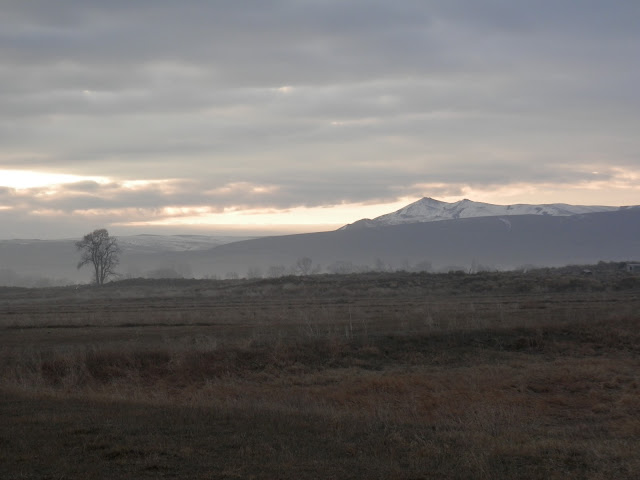I’ve been walking to ranch headquarters lately. It only takes
about ten minutes and I take our three dogs along for the outing. I put them in
a tiny wood shack near the corrals where they hang out until I’m done with
chores. The walk is not particularly scenic, but I relish it. Every morning is
different. The snow earlier this week brought 6 degree temps. Then today it was
a balmy 29 degrees with thick damp air. Fog hung along the river and it was
dead quiet except for the meadowlarks calling from various roosts across the
pastures and red-wing blackbirds gurgling in the willows. I never hear
a red-wing that I don’t recall the story my mother told of an ancestor of mine
whose child asked, “Mom, is there water in that bird?”
Cassie, the eldest dog, mostly follows along. Kate and
Clyde, full of border collie frenzy, run laps in front of me, overjoyed with .
. . what?- life I guess. This morning I about fainted when a truck whizzed by
narrowly missing Kate. Why do people drive so fast? And why do they insist on
throwing a fresh batch of beer cans along the road every week? Who are these
people? I swear they go home and kick their dogs and beat their wives.
But mostly I don’t notice the cans. Maybe tomorrow I’ll
remember a bag and collect them as I go. And most motorists slow down and wave as they go by. Another beautiful morning.







